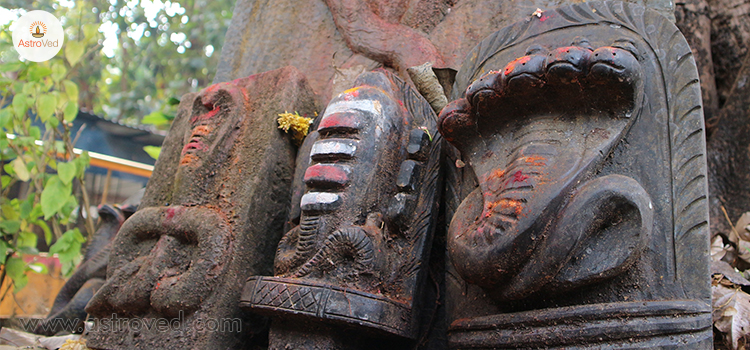Significance of Nagula Chavithi
About Nagula Chavithi
Nagula Chavithi is considered as an auspicious day to perform the Naga Pooja (serpent worship) ritual. The day is observed on the Chaturthi (fourth day) after Amavasya (new moon) during the Hindu month of ‘Karthika’. The festivals of Nag Panchami and Nagasashti are observed after Naga Chaturthi. On the auspicious occasion of Nagula Chavithi, worship is offered to the Nag Devatas (Snake Gods). It is mainly observed by married women who pray for the well-being of their children. On this day, women observe a ‘Vrat’ (fast) and offer prayers to propitiate the Snake God (Naga Pooja). During Nagula Chavithi, Ashtanga (eight hooded cobra) is worshiped and propitiated. Milk, dry fruits and sometimes even eggs are offered to ‘Sarpa Devata’ at the ‘Valmeeka’ or ‘Putta’ (snake pits), to appease the Snake God. The rituals and observed on this day may vary from region to region, but the essence of the festival remains the same. Nagula Chavithi is celebrated in a big way, in many parts of Andhra Pradesh and Karnataka.
Legend of Nagula Chavithi
Several Gods in the Hindu pantheon are closely associated with snakes, thus the observance of Snake worship is highly relevant in Hinduism. Lord Shiva is also referred to as ‘Naga Bhushan’ and portrayed with a snake wrapped around his neck, while Lord Vishnu is known as ‘Sesha Thalpa Sai’, with the serpent God serving as his bed. Lord Ganesh is also referred to as ‘Naga Yajnopaveetha’ and Lord Kumara Swamy as ‘Naga Swarupa’. The legend of Nagula Chavithi is deeply embedded in Hindu mythology, which states that during the churning of the cosmic ocean (Samudra Manthan) by the Gods and demons in search of nectar, a serpent was used as a rope. The process first unearthed the ‘Halahal’ poison, which had tremendous negative implications for the world. But, Lord Shiva swallowed it, and as a result his throat turned blue. This earned him the moniker ‘Neelakantha’ (blue throat). However, a few drops did spill on the Earth and ever since, people started the ritual of snake worship to protect themselves from the evil effects of the poison. Significance of Nagula Chavithi The worship of snakes is an integral part of Hindu culture and holds tremendous religious significance. Snakes are considered helpful in many aspects in rural areas, especially by the agricultural community. During the winter, snakes emerge from their pits and consume the rats which destroy crops. Snakes, also kill harmful micro-organisms in fresh water. Thus, Nagula Chavithi is observed to express gratitude to snakes, which play a vital role in making the soil fertile for crops. Snakes also occupy an exalted position in astrology, as the planet ‘Rahu’ represents a snake. Worshiping the snake God can nullify the malefic effects of ‘Rahu’. The practice of worshiping snakes also displays the inclination of human beings to live in harmony with nature. Hence, one should maintain the sanctity of forests to protect the habitats of snakes and other animals.
https://youtu.be/I5VIC-ptPd4
Rituals observed during Nagula Chavithi
In keeping with the tradition of most Hindu rituals, having a bath early in the morning is considered a must. On the occasion of Nagula Chavithi, devotees install the idol of Naga Devata in the prayer altar and perform Puja to the deity. Many people visit the ‘Putta’ (snake burrow) to offer ‘Prasad’ to the Snake God.
Offerings of Naivedhyam of sesame laddus, dish made of lentils, and a sweet dish made of Rice flour and jaggery are made to the snake deity. Pujas are performed with flowers, cow milk, turmeric, kumkum, bananas, tamboolam and rice flour.
Circumnavigating the snake pit after the Puja is also a part of the rituals and gains the blessings of the deity.
On the auspicious occasion of Nagula Chavithi, prayers and rituals are conducted in all ‘Naga’ temples, with people coming from far and near to worship the deity. 


















